
Jerrin Thomas George
@jerrintgeorge.bsky.social
Postdoc at Wiedenheft Lab 🥼 | Former HFSP postdoctoral fellow at Sternberg Lab| 🧬 CRISPR-Cas enthusiast | Interested in mobile genetic elements
https://scholar.google.com/citations?user=sJ8ogyEAAAAJ&hl=en&oi=ao
https://scholar.google.com/citations?user=sJ8ogyEAAAAJ&hl=en&oi=ao
Pinned
I am happy to share our work on the mechanism of prokaryotic immunity by a reverse transcriptase associated with an SMC-family ATPase, now published in @natcomms.nature.com
🔗 nature.com/articles/s4146…
(🧵 on the bioRxiv version ⬇️)
🔗 nature.com/articles/s4146…
(🧵 on the bioRxiv version ⬇️)
Reposted by Jerrin Thomas George
Structural basis of antiphage defence by an ATPase-associated reverse transcriptase
@jerrintgeorge.bsky.social
@jerrintgeorge.bsky.social

Structural basis of antiphage defence by an ATPase-associated reverse transcriptase - Nature Communications
In this study, the authors determine the structure of a Type I-A retron from E. coli FORC82 and reveal the functional interplay between Reverse Transcriptases (RTs) and Structural Maintenance of Chromosomes (SMC) ATPases.’
bit.ly
October 6, 2025 at 9:35 AM
Structural basis of antiphage defence by an ATPase-associated reverse transcriptase
@jerrintgeorge.bsky.social
@jerrintgeorge.bsky.social
I am happy to share our work on the mechanism of prokaryotic immunity by a reverse transcriptase associated with an SMC-family ATPase, now published in @natcomms.nature.com
🔗 nature.com/articles/s4146…
(🧵 on the bioRxiv version ⬇️)
🔗 nature.com/articles/s4146…
(🧵 on the bioRxiv version ⬇️)
September 29, 2025 at 2:31 AM
I am happy to share our work on the mechanism of prokaryotic immunity by a reverse transcriptase associated with an SMC-family ATPase, now published in @natcomms.nature.com
🔗 nature.com/articles/s4146…
(🧵 on the bioRxiv version ⬇️)
🔗 nature.com/articles/s4146…
(🧵 on the bioRxiv version ⬇️)
Reposted by Jerrin Thomas George
Ever wondered why some bacteria have multiple CRISPR-Cas systems? Our new study led by Leah Smith shows how type I CRISPR systems can promote the acquisition and retention of new spacers into a co-occuring type III system. www.sciencedirect.com/science/arti...

Type I CRISPR-Cas immunity primes type III spacer acquisition
CRISPR-Cas systems are diverse, with microbes harboring multiple classes and subtypes. Type I DNA-targeting and type III RNA-targeting systems often c…
www.sciencedirect.com
August 18, 2025 at 3:06 PM
Ever wondered why some bacteria have multiple CRISPR-Cas systems? Our new study led by Leah Smith shows how type I CRISPR systems can promote the acquisition and retention of new spacers into a co-occuring type III system. www.sciencedirect.com/science/arti...
Reposted by Jerrin Thomas George
New from our lab in @narjournal.bsky.social:
We dissect the folding dynamics of a fundamental element of RNA secondary structure—a stem-loop—at single-molecule and microsecond resolution.
doi.org/10.1093/nar/... 1/5
We dissect the folding dynamics of a fundamental element of RNA secondary structure—a stem-loop—at single-molecule and microsecond resolution.
doi.org/10.1093/nar/... 1/5
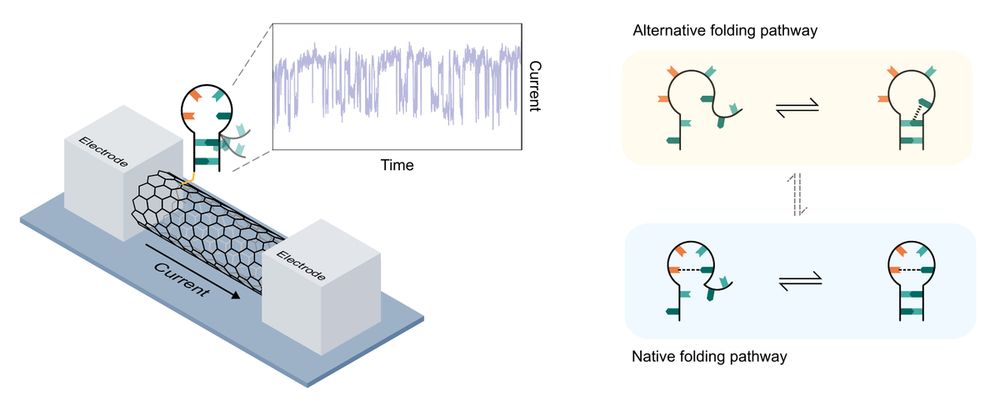
July 31, 2025 at 2:27 AM
New from our lab in @narjournal.bsky.social:
We dissect the folding dynamics of a fundamental element of RNA secondary structure—a stem-loop—at single-molecule and microsecond resolution.
doi.org/10.1093/nar/... 1/5
We dissect the folding dynamics of a fundamental element of RNA secondary structure—a stem-loop—at single-molecule and microsecond resolution.
doi.org/10.1093/nar/... 1/5
Reposted by Jerrin Thomas George
Words cannot describe how excited I am to share the findings from the second half of my postdoc in @aaronwhiteley.bsky.social's lab where we discover that bacteria use functional amyloids to defend themselves from predatory bacteria. rdcu.be/euu5Y. See thread for details on this epic adventure 1/.
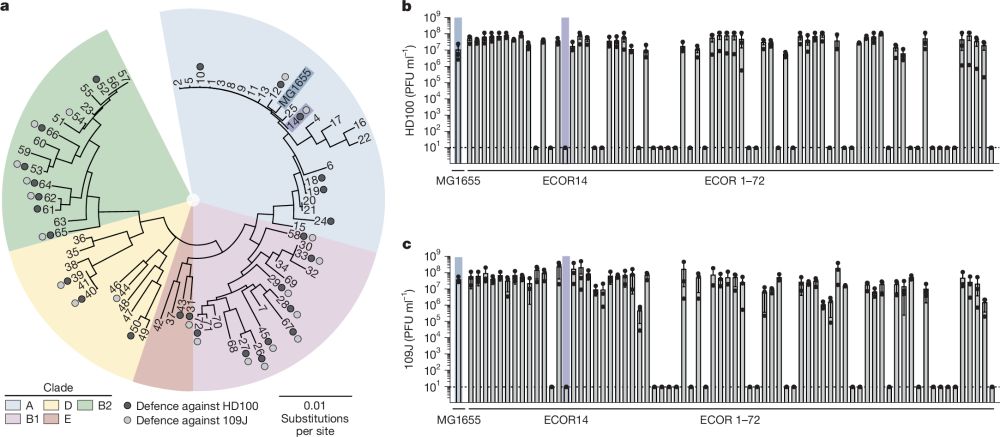
Functional amyloid proteins confer defence against predatory bacteria
Nature - Escherichia coli uses curli fibres, oligomers of the functional amyloid CsgA, as a barrier to protect against the predatory bacteria Bdellovibrio bacteriovorus and Myxococcus xanthus in a...
rdcu.be
July 2, 2025 at 8:10 PM
Words cannot describe how excited I am to share the findings from the second half of my postdoc in @aaronwhiteley.bsky.social's lab where we discover that bacteria use functional amyloids to defend themselves from predatory bacteria. rdcu.be/euu5Y. See thread for details on this epic adventure 1/.
Reposted by Jerrin Thomas George
We wrote a review on Transposable Elements (TEs) and almost all aspects of TE silencing and their roles in biological processes & disease.
www.nature.com/articles/s41...
www.nature.com/articles/s41...

Transcriptional and post-transcriptional regulation of transposable elements and their roles in development and disease - Nature Reviews Molecular Cell Biology
Transposable elements (TEs) comprise nearly half of the human genome. This Review discusses transcriptional and post-transcriptional mechanisms that repress TE activity, how TEs escape this suppressio...
www.nature.com
June 30, 2025 at 1:12 PM
We wrote a review on Transposable Elements (TEs) and almost all aspects of TE silencing and their roles in biological processes & disease.
www.nature.com/articles/s41...
www.nature.com/articles/s41...
Reposted by Jerrin Thomas George
New Preprint!! Alejandro González-Delgado accomplished a major feat on this one: ported retron recombineering, which we love so much in E. coli, into 14 new bacterial species via a massive collaborative effort involving 9 labs!
www.biorxiv.org/content/10.1...
www.biorxiv.org/content/10.1...
June 18, 2025 at 7:22 PM
New Preprint!! Alejandro González-Delgado accomplished a major feat on this one: ported retron recombineering, which we love so much in E. coli, into 14 new bacterial species via a massive collaborative effort involving 9 labs!
www.biorxiv.org/content/10.1...
www.biorxiv.org/content/10.1...
Reposted by Jerrin Thomas George
Exciting work from the Guarné lab indicating how the elusive TnsE pathway of prototypic Tn7 recognizes DNA replication features using an asymmetric dimer to integrate multiple signals at DNA replication forks linking target recognition to transposase recruitment doi.org/10.1093/nar/...
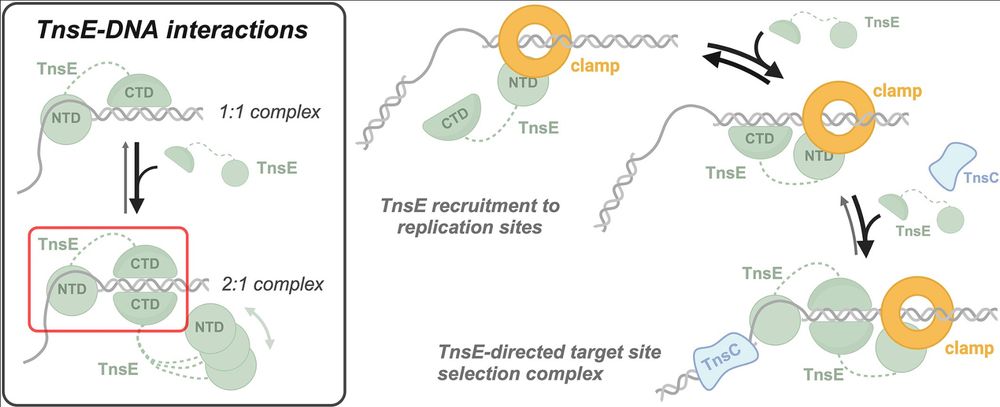
June 15, 2025 at 11:43 AM
Exciting work from the Guarné lab indicating how the elusive TnsE pathway of prototypic Tn7 recognizes DNA replication features using an asymmetric dimer to integrate multiple signals at DNA replication forks linking target recognition to transposase recruitment doi.org/10.1093/nar/...
Reposted by Jerrin Thomas George
1/10 New pre-print(s) from the Sternberg Lab in collaboration with Leifu Chang's Lab! We uncover the unprecedented molecular mechanism of CRISPR-Cas12f-like proteins, which drive RNA-guided transcription independently of canonical promoter motifs.
Full story here:
www.biorxiv.org/content/10.1...
Full story here:
www.biorxiv.org/content/10.1...
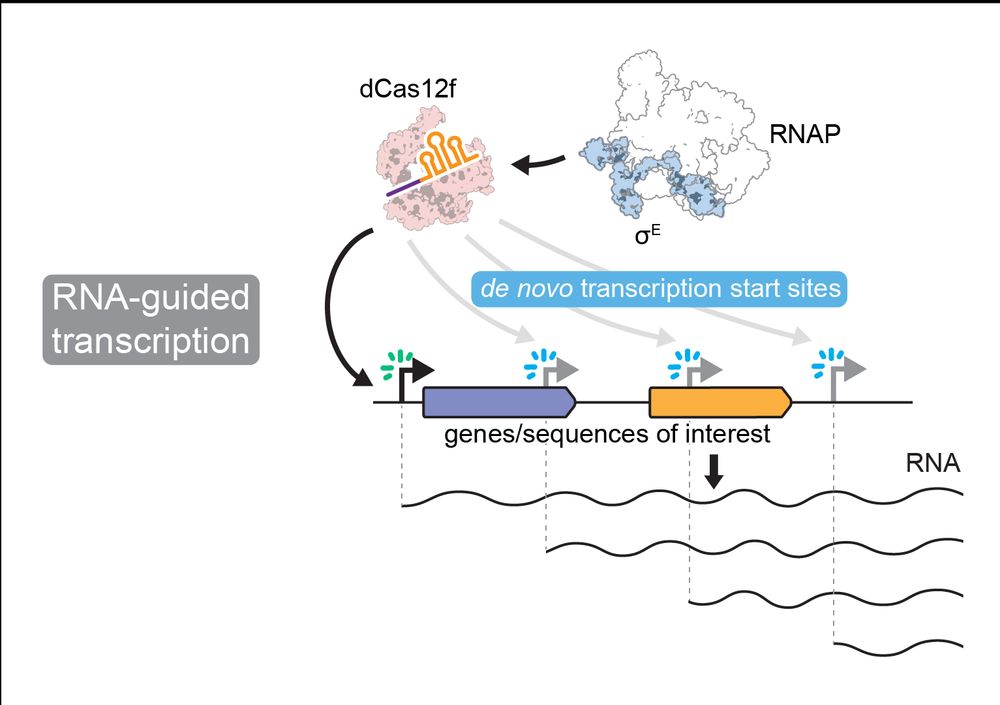
June 11, 2025 at 4:03 PM
1/10 New pre-print(s) from the Sternberg Lab in collaboration with Leifu Chang's Lab! We uncover the unprecedented molecular mechanism of CRISPR-Cas12f-like proteins, which drive RNA-guided transcription independently of canonical promoter motifs.
Full story here:
www.biorxiv.org/content/10.1...
Full story here:
www.biorxiv.org/content/10.1...
Reposted by Jerrin Thomas George
We're thrilled to share the published version of our DRT9 story, online today @nature.com! Congratulations to all authors!
www.nature.com/articles/s41...
www.nature.com/articles/s41...
Hello BlueSky! Inaugural post here from the Sternberg Lab. We're excited to share our latest work, in which we teamed up with the @WiedenheftLab to study how DRT9 reverse transcriptases provide antiviral immunity. Here’s what we found: www.biorxiv.org/content/10.1...

Protein-primed DNA homopolymer synthesis by an antiviral reverse transcriptase
Bacteria defend themselves from viral predation using diverse immune systems, many of which sense and target foreign DNA for degradation. Defense-associated reverse transcriptase (DRT) systems provide...
www.biorxiv.org
May 28, 2025 at 9:06 PM
We're thrilled to share the published version of our DRT9 story, online today @nature.com! Congratulations to all authors!
www.nature.com/articles/s41...
www.nature.com/articles/s41...
Reposted by Jerrin Thomas George
@science.org 🧫🧬❄️🔬 Molecular basis of influenza ribonucleoprotein complex assembly and processive RNA synthesis | Science www.science.org/doi/10.1126/...
@yiweichang.bsky.social www.yiweichanglab.org @jiwasa.bsky.social #virology #Influenza #Cryo-EM #StructuralBiology #RNA #polymerase
@yiweichang.bsky.social www.yiweichanglab.org @jiwasa.bsky.social #virology #Influenza #Cryo-EM #StructuralBiology #RNA #polymerase
May 15, 2025 at 11:12 PM
@science.org 🧫🧬❄️🔬 Molecular basis of influenza ribonucleoprotein complex assembly and processive RNA synthesis | Science www.science.org/doi/10.1126/...
@yiweichang.bsky.social www.yiweichanglab.org @jiwasa.bsky.social #virology #Influenza #Cryo-EM #StructuralBiology #RNA #polymerase
@yiweichang.bsky.social www.yiweichanglab.org @jiwasa.bsky.social #virology #Influenza #Cryo-EM #StructuralBiology #RNA #polymerase
Reposted by Jerrin Thomas George
A beautiful discovery by Joel Tan and Philip Kranzusch, out today in Nature:
A DNA-gated molecular guard controls bacterial Hailong anti-phage defence
Congrats Joel and Philip! Was a pleasure to contribute to this discovery together with Sarah Melamed
www.nature.com/articles/s41...
A DNA-gated molecular guard controls bacterial Hailong anti-phage defence
Congrats Joel and Philip! Was a pleasure to contribute to this discovery together with Sarah Melamed
www.nature.com/articles/s41...
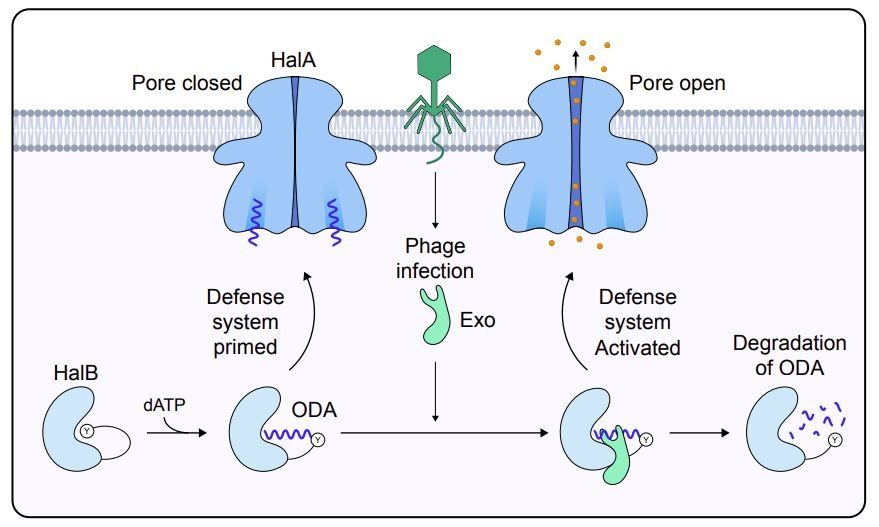
April 30, 2025 at 6:59 PM
A beautiful discovery by Joel Tan and Philip Kranzusch, out today in Nature:
A DNA-gated molecular guard controls bacterial Hailong anti-phage defence
Congrats Joel and Philip! Was a pleasure to contribute to this discovery together with Sarah Melamed
www.nature.com/articles/s41...
A DNA-gated molecular guard controls bacterial Hailong anti-phage defence
Congrats Joel and Philip! Was a pleasure to contribute to this discovery together with Sarah Melamed
www.nature.com/articles/s41...
Reposted by Jerrin Thomas George
I am thrilled to share the first manuscript from the Wiles lab! We present "Phollow", an in vivo phage-tagging approach that enables direct observation of phage outbreaks with single-virion resolution by live imaging. Here some highlights 👇 www.nature.com/articles/s41...
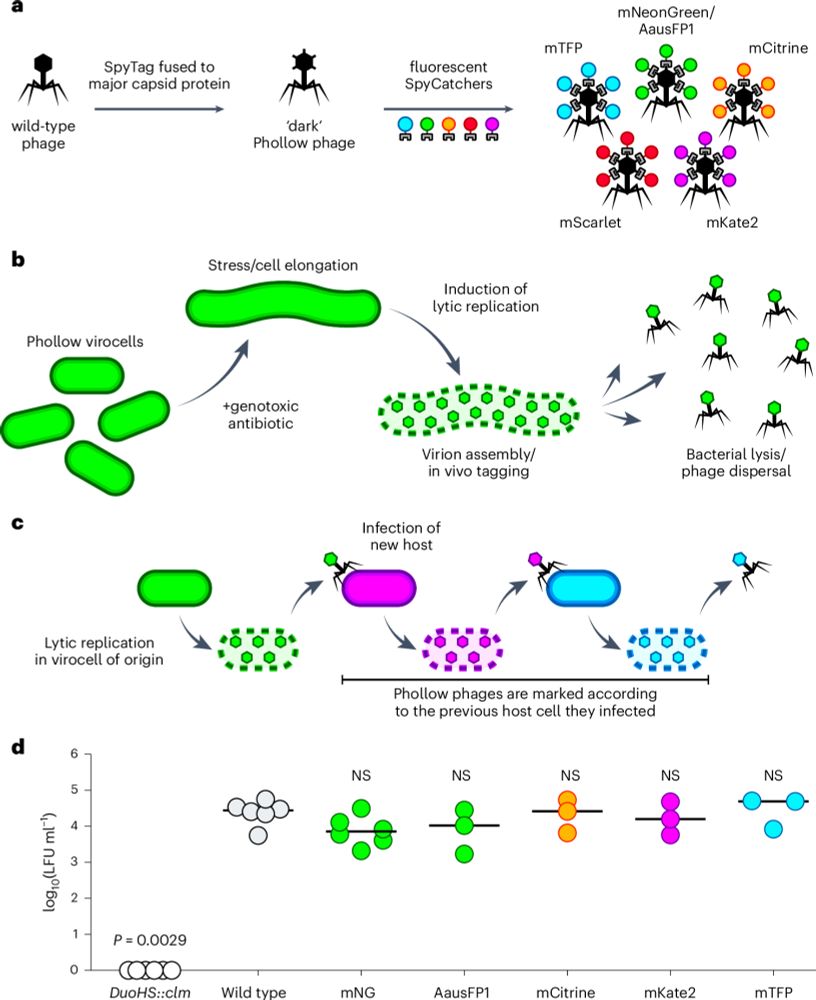
Phollow reveals in situ phage transmission dynamics in the zebrafish gut microbiome at single-virion resolution
Nature Microbiology - ‘Phollow’ is a live imaging-based fluorescence tagging approach that can track phage replication and spread in situ with single-virion resolution.
www.nature.com
April 18, 2025 at 6:38 PM
I am thrilled to share the first manuscript from the Wiles lab! We present "Phollow", an in vivo phage-tagging approach that enables direct observation of phage outbreaks with single-virion resolution by live imaging. Here some highlights 👇 www.nature.com/articles/s41...
Reposted by Jerrin Thomas George
Check out our new story led by @aesully98.bsky.social describing how bacteria turn immune evasion against phage! In collaboration with @benmorehouse.bsky.social lab, we discover that bacteria guard their nucleotide second messenger pool using a nucleotidyltransferase related to Cas10/CRISPR enzymes
Excited to share that my work from the @aaronwhiteley.bsky.social lab is now on bioRxiv! With @benmorehouse.bsky.social, we discovered that the Panoptes defense system—named after the all-seeing watchman of Hera—uses decoy nucleotides to detect phage anti-defense proteins.

A minimal CRISPR polymerase produces decoy cyclic nucleotides to detect phage anti-defense proteins
Bacteria use antiphage systems to combat phages, their ubiquitous competitors, and evolve new defenses through repeated reshuffling of basic functional units into novel reformulations. A common theme ...
www.biorxiv.org
April 8, 2025 at 2:52 AM
Check out our new story led by @aesully98.bsky.social describing how bacteria turn immune evasion against phage! In collaboration with @benmorehouse.bsky.social lab, we discover that bacteria guard their nucleotide second messenger pool using a nucleotidyltransferase related to Cas10/CRISPR enzymes
Reposted by Jerrin Thomas George
Interested in phage defenses that natively block lytic phage used in therapies?
Or do you want to figure out if a phage has a modified genome?
Meet the END-nucleases, an enzyme family that can broadly restrict phages with many diverse modifications. From talented post-doc Wearn-Xin Yee!
Or do you want to figure out if a phage has a modified genome?
Meet the END-nucleases, an enzyme family that can broadly restrict phages with many diverse modifications. From talented post-doc Wearn-Xin Yee!

April 3, 2025 at 4:15 PM
Interested in phage defenses that natively block lytic phage used in therapies?
Or do you want to figure out if a phage has a modified genome?
Meet the END-nucleases, an enzyme family that can broadly restrict phages with many diverse modifications. From talented post-doc Wearn-Xin Yee!
Or do you want to figure out if a phage has a modified genome?
Meet the END-nucleases, an enzyme family that can broadly restrict phages with many diverse modifications. From talented post-doc Wearn-Xin Yee!
I am super excited to share our work uncovering the structure and mechanism of an ATPase-associated reverse transcriptase (RT) involved in prokaryotic antiviral defense, now available as a preprint on bioRxiv!🧬🦠🔬
www.biorxiv.org/content/10.1...
🧵👇
www.biorxiv.org/content/10.1...
🧵👇

Structural basis of antiphage defense by an ATPase-associated reverse transcriptase
Reverse transcriptases (RTs) have well-established roles in the replication and spread of retroviruses and retrotransposons. However, recent evidence suggests that RTs have been conscripted by cells f...
www.biorxiv.org
March 27, 2025 at 1:59 PM
I am super excited to share our work uncovering the structure and mechanism of an ATPase-associated reverse transcriptase (RT) involved in prokaryotic antiviral defense, now available as a preprint on bioRxiv!🧬🦠🔬
www.biorxiv.org/content/10.1...
🧵👇
www.biorxiv.org/content/10.1...
🧵👇
Reposted by Jerrin Thomas George
1/ Transposable elements are often called "jumping genes" because they mobilize within genomes. 🧬
But did you know they can also jump 𝘣𝘦𝘵𝘸𝘦𝘦𝘯 cells? 🤯
Our new study reveals how retrotransposons invade the germline directly from somatic cells.
www.biorxiv.org/content/10.1...
A short thread 🧵👇
But did you know they can also jump 𝘣𝘦𝘵𝘸𝘦𝘦𝘯 cells? 🤯
Our new study reveals how retrotransposons invade the germline directly from somatic cells.
www.biorxiv.org/content/10.1...
A short thread 🧵👇
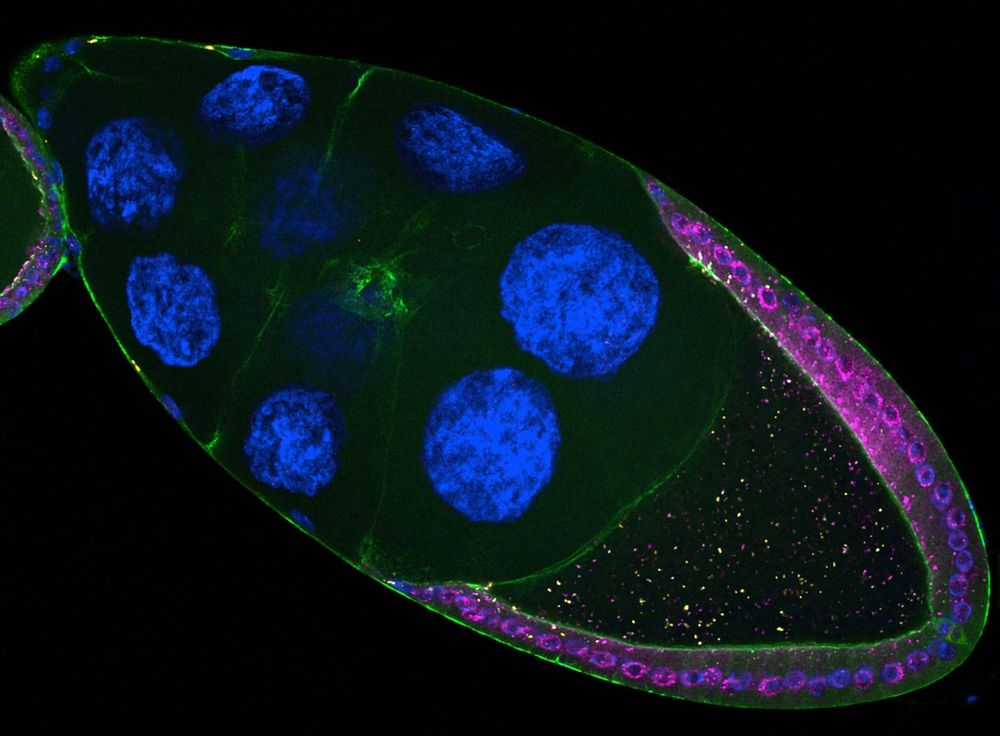
March 17, 2025 at 11:56 AM
1/ Transposable elements are often called "jumping genes" because they mobilize within genomes. 🧬
But did you know they can also jump 𝘣𝘦𝘵𝘸𝘦𝘦𝘯 cells? 🤯
Our new study reveals how retrotransposons invade the germline directly from somatic cells.
www.biorxiv.org/content/10.1...
A short thread 🧵👇
But did you know they can also jump 𝘣𝘦𝘵𝘸𝘦𝘦𝘯 cells? 🤯
Our new study reveals how retrotransposons invade the germline directly from somatic cells.
www.biorxiv.org/content/10.1...
A short thread 🧵👇

